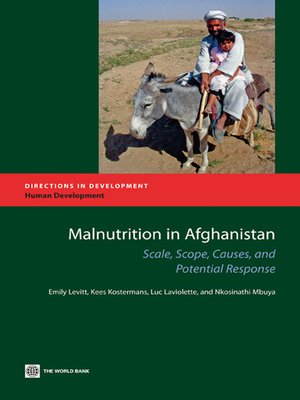Malnutrition in Afghanistan
ebook ∣ Scale, Scope, Causes, and Potential Reponse · Directions in Development
By Emily Levitt

Sign up to save your library
With an OverDrive account, you can save your favorite libraries for at-a-glance information about availability. Find out more about OverDrive accounts.
Find this title in Libby, the library reading app by OverDrive.



Search for a digital library with this title
Title found at these libraries:
| Loading... |
South Asia has the highest rates of malnutrition and the largest number of malnourished women and children in the world. Childhood malnutrition is the main cause of child mortality—one-third of all child deaths are due to the underlying cause of malnutrition. For the children who survive, malnutrition results in lifelong problems by severely reducing a child's ability to learn and to grow to his or her full potential. Malnutrition directly leads to less productive adults and thus to weaker national economic performance. The negative impact of malnutrition on a society's productivity and a nation's long-term development is difficult to underestimate. Malnutrition is a key development priority for the World Bank's South Asia region. The Bank intends to increase its commitment to reducing malnutrition in the region. As a first step, Bank staff are preparing a series of country assessments such as Malnutrition in Afghanistan. These assessments will be useful for governments and development partners committed to scaling up effective, evidence-based interventions to reduce malnutrition in their countries. Conclusive evidence shows that a multisectoral planning approach, followed by actions in the various sectors, is the most successful method to improve a populations' nutrition. Malnutrition in Afghanistan provides the background analysis for the development of a comprehensive nutrition action plan. The timing of this report is propitious. The international communities' interest in the developmental benefits of nutrition programming is high. This analytical report is part of a broader effort by the World Bank South Asia region to increase investments in nutrition, recognizing that good nutrition is important to economic growth and development, and because investing in well-proven nutrition interventions pays high dividends in poverty reduction and national economic development.






